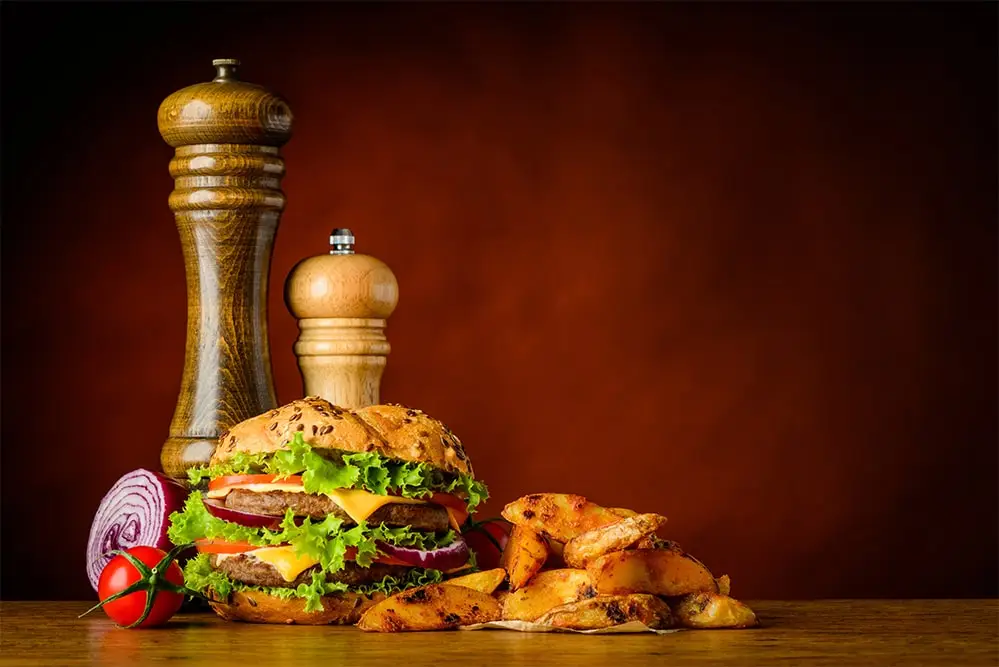The Gulf region has been facing a number of challenges when it comes to combatting increasing obesity rates and improving public health in recent years. Saudi Arabia currently ranks 20th globally in obesity prevalence according to the World Health Organization’s data, with 42.45% of adults considered to be obese. In response, the Saudi Food and Drug Authority (SFDA) has begun implementing mandatory labeling standards on restaurant menus. These regulations will be rolled out this year and mark a pivotal shift in transparency and consumer safety in the food service industry.
Current market data shows that 88% of surveyed food products in Saudi Arabia now display nutritional facts, though only 38% meet the full SFDA requirements. The menu labeling regulations mandate that detailed nutritional information must be displayed, such as calories, proteins, sugar content and allergens just to name a few. This enables consumers to make healthy food choices through informed dining decisions and sets a precedent for similar initiatives across the Gulf region.
Understanding New Calorie Labeling Regulations in Saudi Arabia

In 2016, Saudi Arabia launched the “2030 Vision”, an initiative aimed at improving the quality of life in the country, including promoting healthier lifestyles for the general population. The SFDA introduced comprehensive calorie labeling regulations in 2019 as a way to encourage consumers to make healthier food choices.
This required all food establishments to display calorie amounts, nutritional facts and allergens on their menus. The implementation will follow a two-phase approach, with the first phase coming into effect in November 2024 and the second phase from July 2025.
The objectives of these calorie labeling regulations are firstly, to educate consumers on nutrition information when purchasing food products. This in turn allows them to make more informed decisions when it comes to the food they eat by actually seeing the caloric amount. It also encourages food establishments to sell food and menu items that have lower calorie amounts, as consumers will be enticed to purchase lower-calorie items for better health outcomes in the long run.
Mandatory Nutritional Requirements for Menu Display
According to the new SFDA regulations that are in effect from 2024, food establishments must display five key elements on their menus. Other than mandatory calorie information, these elements include allergen disclosures, caffeine content (for beverages), physical activity labels, and labeling high sodium meals.
This comprehensive nutritional information must include energy values (in kcal), total fat content (with saturated and trans fat breakdown), cholesterol (in grams), total carbohydrates (including dietary fiber, polyols/sugar alcohols, and sugar content), protein (in grams), and sodium content (in grams).
Allergen labeling must clearly identify the presence of 14 major allergens, including milk/lactose, eggs, peanuts, tree nuts, crustaceans, fish, gluten, soya, sesame seeds, celery, mustard, sulfites, lupins, and mollusks. These requirements demonstrate Saudi Arabia’s comprehensive approach to nutritional transparency and public health protection.
See How FoodLabelMaker Can Help You
Scope of the New Menu Labeling Regulations

The SFDA regulations apply to a wide range of food service establishments, ensuring that there is coverage of the entire food service industry in Saudi Arabia. This inclusive approach helps create consistent nutritional information and access across various dining environments.
Affected Establishments
The regulations cover all food service operations where prepared food is sold directly to consumers, including:
- Full-service restaurants
- Chain restaurants and fast food restaurants
- Cafés and coffee shops
- Institutional cafeterias
- Bakeries offering dine-in services
- Supermarket food counters
- Mobile food vendors and kiosks
- Ice cream and dessert shops
- Catering services
- Educational and workplace cafeterias
- Healthcare facility food services
- Recreational facility food outlets
- Online food delivery services
Exempted Items
Understanding the several limitations and challenges of implementation, certain items are exempt from the calorie labeling requirements. These include:
- Pre-packaged foods with existing nutritional labels
- Products already registered in the ZAD system
- Daily specials and limited-time menu offerings
- Custom orders
- Self-service condiments for general use
Menu Calorie Labeling Display and Formatting Requirements

The SFDA has established clear guidelines for displaying calorie information on menus to ensure consistency and readability across all food service establishments.
Menu Presentation Guidelines
Calorie information must be displayed prominently on all menus, with specific formatting requirements:
- Position: Directly adjacent to each food item name or price
- Font size: No smaller than or matching the size of the item name or price
- Font style: The font must have a clear and legible typeface without decorative elements that could be hard to read on a package
- Format: The standardized format uses “XXX Cal” or “XXX Calories”
- Color: No specific color is mandated but it needs to have a sufficient color contrast from the background color to ensure readability
Specific Display Rules for Different Menu Types
- Standard Menu Items
- Regular menu items require straightforward calorie displays with a single value clearly associated with each dish.
- The calorie amount must follow the mandated formatting rules
- They are required to use the terms “Cal” or “Calories”
- Variable Menu Items: For food items on a menu board with multiple options
- Use the range format for multiple options (3 or more variations)
- E.g. “Smoothie (850-1150 Cal)”
- Use the slash format for two options
- E.g. “Pizza Slice (Thin/Regular) 400/550 Cal”
- List individual values for each variety when listed separately
- Use the range format for multiple options (3 or more variations)
- Combination Meals
- The total calorie counts for the complete meal must be displayed
- Individual component calories should be shown when applicable
- Ensure that clear ranges are displayed for customizable combinations
- Multiple Serving Items
- Ensure that there is a per-serving calorie count display and total package calorie counts
- There must also be a clear serving size indication
- E.g. “Family Pizza 1600 Cal (400 Cal/slice, serves 4)”
- Add-ons and Toppings
- Additional items require separate calorie declarations
- There needs to be a clear indication of additional calories
- Calorie consumption must also be considered for size variations when applicable
Digital Menu Considerations
Digital platforms must maintain the same clarity and accessibility standards across:
- Online ordering systems
- Digital menu boards
- Mobile applications
- QR code-accessed menus
Common Challenges and Pushback For Menu Calorie Labeling
Enforcing these regulations has caused several significant challenges for food establishments in implementing calorie labeling:
Operational Challenges
- There are significant costs associated with these implementations, as establishments require menu analysis to test the caloric range of their food items and menus might require an entire redesign to display calories
- There are ongoing expenses for nutritional analysis as the caloric range and nutritional information of new menu items need to be done
- Staff need to be trained on these requirements for understanding and communicating calorie information to consumers, which takes time and could affect operational tasks
- Regular menu updates need to occur and reprinting costs are associated with that
Technical Barriers
- Many sit down restaurants that have digital menus need to integrate specific technology to display relevant nutrition information
- Complex calculations are required for variable menu items, which might require specific software or a trained expert to calculate
- Accuracy needs to be maintained across different preparation methods, which takes additional staff training and requires more effective equipment
- Standardizing portion sizes is required for accurate calculations, but might not always be possible if an establishment is busy and orders need to be rushed
- Managing seasonal menu changes can be difficult and time-consuming
- Coordinating with multiple suppliers becomes technical if they have not yet implemented these standards
Business Concerns
- There is a potential impact on profit margins as restaurants might need to adjust pricing to remain competitive, or there could be decreased sales of high-calorie items that haven’t been reformulated yet
- On a more qualitative note, customers might have an adverse reaction to seeing calorie information displayed on menus
- Some businesses can leverage calorie information as a marketing advantage, while others struggle to maintain unique selling propositions when calories must be displayed
- Resource allocation becomes tricky for smaller businesses when remaining compliant as initial investments and ongoing resources are needed to keep up with changing standards
- There are serious liability risks for businesses as imprecise calorie information or lack of documentation could lead to legal issues, reputation damage, or regulatory penalties. This often necessitates additional insurance coverage and legal consultation which adds an extra fee.
Despite these challenges, the regulation has sparked positive changes in consumer behavior and business practices. Careful planning and phased implementation can also minimize disruption while maximizing the benefits of increased transparency for both businesses and consumers.
Comparing UAE vs Saudi Menu Calorie Labeling Requirements
SFDA Requirements
Saudi Arabia has taken the lead in implementing menu calorie labeling, with the SFDA regulations in effect since January 2019. The Saudi implementation requires comprehensive nutritional information beyond just calories, including proteins, fats, carbohydrates, and sugars. UAE’s requirements, while similar in principle, focus primarily on calorie content, making implementation potentially more straightforward for food establishments.
Key differences include:
- Saudi Arabia requires full nutritional panels for menu items
- UAE focuses on calorie content as the primary requirement
- Saudi regulations apply uniformly to all establishments, while the UAE initially planned a phased approach based on business size
- Saudi Arabia has established specific tolerance limits for nutritional data accuracy
- UAE places greater emphasis on digital menu compliance
The Saudi implementation has provided valuable insights, with successful establishments reporting increased customer trust and competitive advantages in the health-conscious market segment.
Resources and Support for Nutrition Labeling
Food establishments can access various official guidelines and industry resourcs to assist with calorie labeling implementation. These include:
- Dubai Municipality Food Safety Department documentation
- SFDA comprehensive implementation guides
- The Food and Drug Administration (FDA) website for guidance on international standards and best practices
- Emirates Culinary Guild (UAE’s largest association of professional chefs)
- Saudi Restaurants Association
- Middle East Food Forum
- MENA Restaurant Association
- Food Navigator Middle East for industry news and updates
- There are also several informative social media accounts, forums, and networking opportunities that can provide valuable information on menu labeling policies
Food Label Maker offers comprehensive support for businesses transitioning to calorie-labeled menus. Their label making software provides features including:
- Accurate nutrition information calculations
- Compliant and customizable nutrition labels and design templates
- Regular and up-to-date regulatory requirement updates for the country you are manufacturing and selling your products in
- Integration with existing POS systems and a user-friendly platform to work from
- Staff training resources, videos and expert nutritionists to guide your menu changes or answer any technical questions you might have
- Ongoing technical support
- Food Label Maker also provides a comprehensive Regulatory Hub with in-depth resources that outline the latest regulatory guidelines
Final Thoughts on Menu Labeling Regulations
The implementation of calorie amounts and other nutritional information being labeled on menus reflects a larger shift toward combating the obesity epidemic by empowering consumers to make healthier choices when it comes to food consumption. Establishments in the food industry must ensure that menus and food items clearly reflect these amounts while following relevant formatting guidelines.
As Gulf countries continue to address lifestyle-related health challenges, establishments should adopt these regulations as early as possible. This allows them to be in the best position to adapt to any future compliance changes.
These regulations could also present an opportunity to meet evolving consumer preferences and stand out in the increasingly health-conscious market. Contact Food Label Maker today to learn how we can help your establishment implement effective labeling solutions that meet both regulatory requirements and customer expectations.



